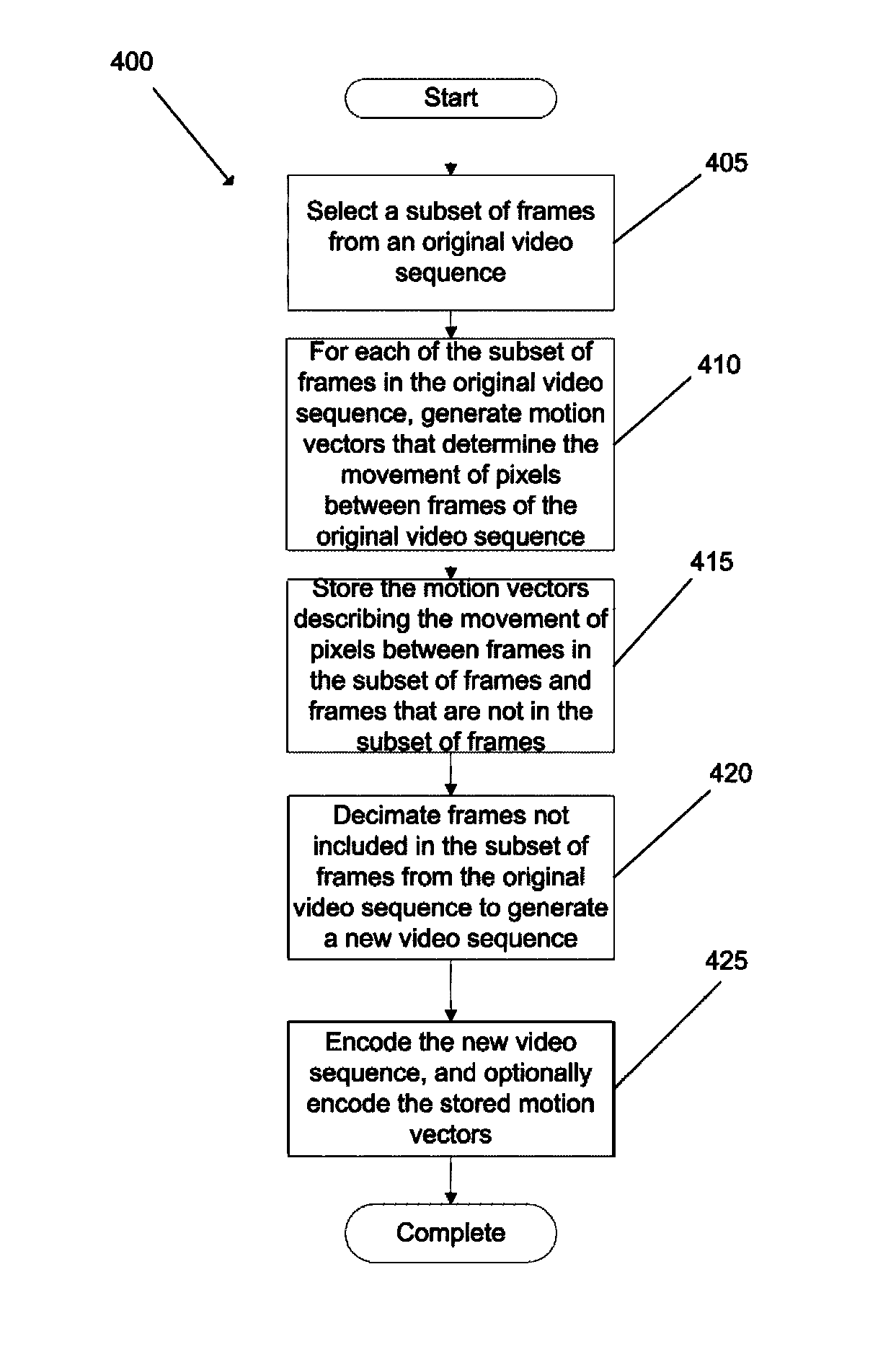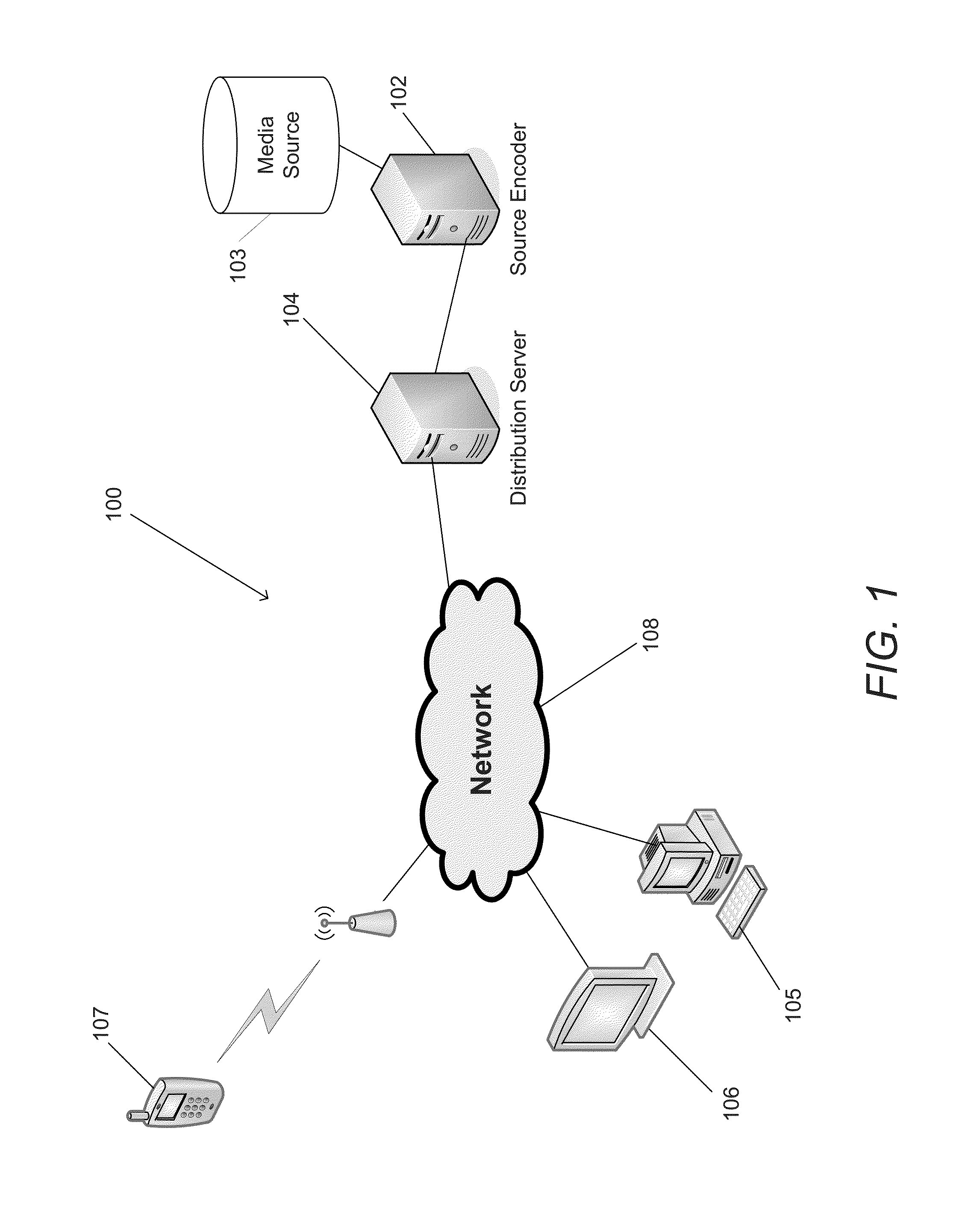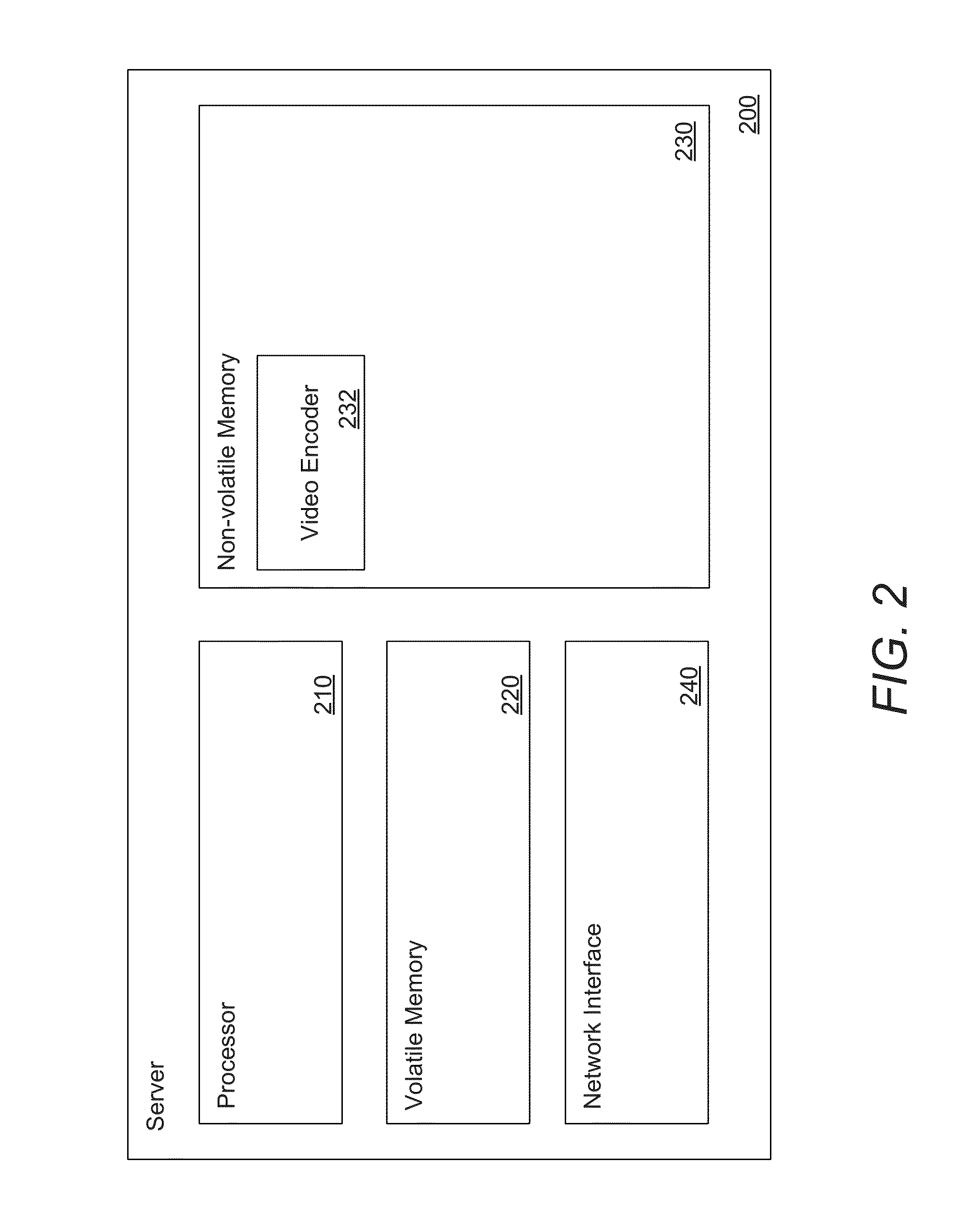Systems and methods for motion-vector-aided video interpolation using real-time smooth video playback speed variation
- Summary
- Abstract
- Description
- Claims
- Application Information
AI Technical Summary
Benefits of technology
Problems solved by technology
Method used
Image
Examples
Embodiment Construction
[0034]Turning now to the drawings, systems and methods for encoding and playing back video at adjustable playback speeds by interpolating frames to achieve smooth playback in accordance with embodiments of the invention are illustrated. In a number of embodiments, re-encoding video at a reduced frame rate may reduce the size of an encoded video sequence. To reduce the number of frames in a video encoding and yet maintain the quality of the video, many embodiments compute and store motion vectors describing the frames of the originally encoded video content that are deleted during the re-encoding of the video at the lower frame rate. These motion vectors are stored in such a way that they can be accessed following the decoding of the re-encoded video sequence. In this way, the motion vectors may be used to interpolate the deleted frames during playback to enable playback of the video sequence at the original frame rate, despite the video sequence being encoded at the lower frame rate...
PUM
 Login to View More
Login to View More Abstract
Description
Claims
Application Information
 Login to View More
Login to View More - R&D
- Intellectual Property
- Life Sciences
- Materials
- Tech Scout
- Unparalleled Data Quality
- Higher Quality Content
- 60% Fewer Hallucinations
Browse by: Latest US Patents, China's latest patents, Technical Efficacy Thesaurus, Application Domain, Technology Topic, Popular Technical Reports.
© 2025 PatSnap. All rights reserved.Legal|Privacy policy|Modern Slavery Act Transparency Statement|Sitemap|About US| Contact US: help@patsnap.com



